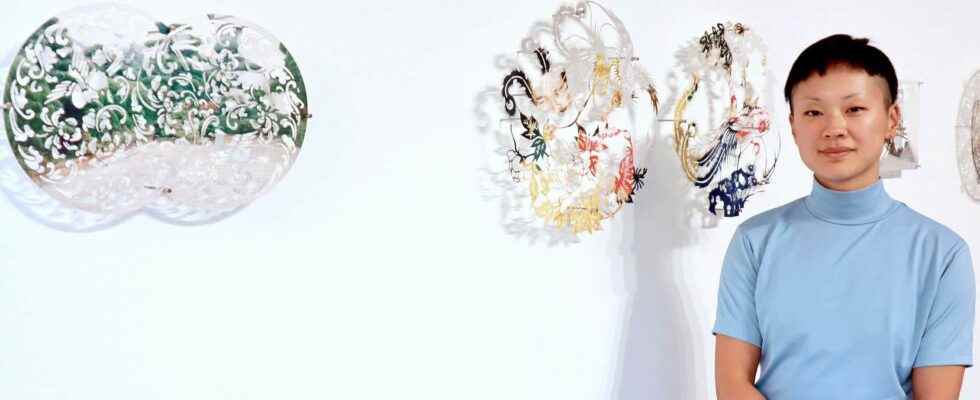Artists An Laurence, Corinne Beaumier and Tong Zhou Lafrance are united by the common theme of the voids left by transnational adoption, which manifest themselves through grief, confusion, longing and frustration. In the exhibition How far can we see ourselves insidethey present works with heterogeneous mediums inspired by their personal stories.
“I had been researching identity and collective narratives for a year, and I still wasn’t able to feel a connection to my adoption story. Everything that happened before I was with my adopted family, when I was told about it, I felt like we were talking about someone else. I wanted this dissociation to be transformed”, explains An Laurence, also curator of the exhibition, speaking of his creative process during a discussion held by the artists to tell their creative process.
Her work seeks to embody the collective memory of Chinese people adopted during China’s family planning policy. On a black wall, above cardboard boxes filled with blankets (which symbolize adopted children who were often found abandoned in a box), MP3 players containing audio recordings of the birth parents’ stories hang.
During the 1990s, China had a birth control policy that forced families to have only one child. In the countryside, where boys were favored for their usefulness in farm work, families could have a second if their first-born was a girl. The consequences of an illegal pregnancy were a severe fine, forced sterilization and the destruction of the family’s home. In this context, thousands of Chinese girls, including the three artists, were adopted abroad. The testimonies that An Laurence has collected recount the forced rupture of these links between parents and children.
One of the stories she exhibits in her installation is that of Xu Guangwen and Jiang Lifeng, two parents living in the countryside who wanted a girl even though they already had a ten-year-old boy. After hiding the pregnancy from the authorities by cheating on the mandatory pregnancy test, they had their daughter taken away. The authorities took her to the municipal orphanage under the strong protests of both parents. A few months later, she was adopted by a Quebec couple.
Corinne Beaumier’s works testify to what happens next. “Many adoptive parents are encouraged to make a keepsake box that tells the story of adoption — with photos from the trip, paperwork, baby clothes. At home, we revisited this box every year as a family. It was a moment that I loved very much, ”recalls Mme Beaumier explaining what inspired his photo decoupage work The background and the forme and its multimedia series Evidence. These two works evoke the memories attached to the moment of adoption and the limits of nostalgia. The artist has used image editing techniques, such as cutting and reworking video files, to leave gaps that symbolize the inadequacy of memories as a way to understand the past.
The performance The birth of my house, by Tong Zhou Lafrance, discusses what happens when adoptees become adults. The artist presents a performance on the reclamation of the stolen home of adopted persons, who often do not know their natural parents or their family heritage. “The performance tells what it is to be a nomad through a backpacking process. I can get back into the world, be reborn each time, says the artist. I have a say in the process. It is not someone who gives birth to me. I have this ability to activate this process myself, from within and without. »
reunion
Artists find the lack of information that afflicts adoptees unfair. For An Laurence and Corinne Beaumier, it was a shock to discover the geopolitical issues behind their adoption. “It’s as if you’ve been lied to all your life, and then you discover reality and you wake up a bit,” says An Laurence. We are told that if we try to search, it is because we no longer love our adoptive family. »
For his part, M.me Beaumier felt she wasted time when she learned the truth. “I did some research and found my birth parents. I filled those holes. I also learned that there are more parents who would like to find their child than you think, she says. It’s sad, because there are many adopted children who are completely unaware that this option exists. We are always told that it is impossible. The system is intentionally made to make these reunions difficult. »
